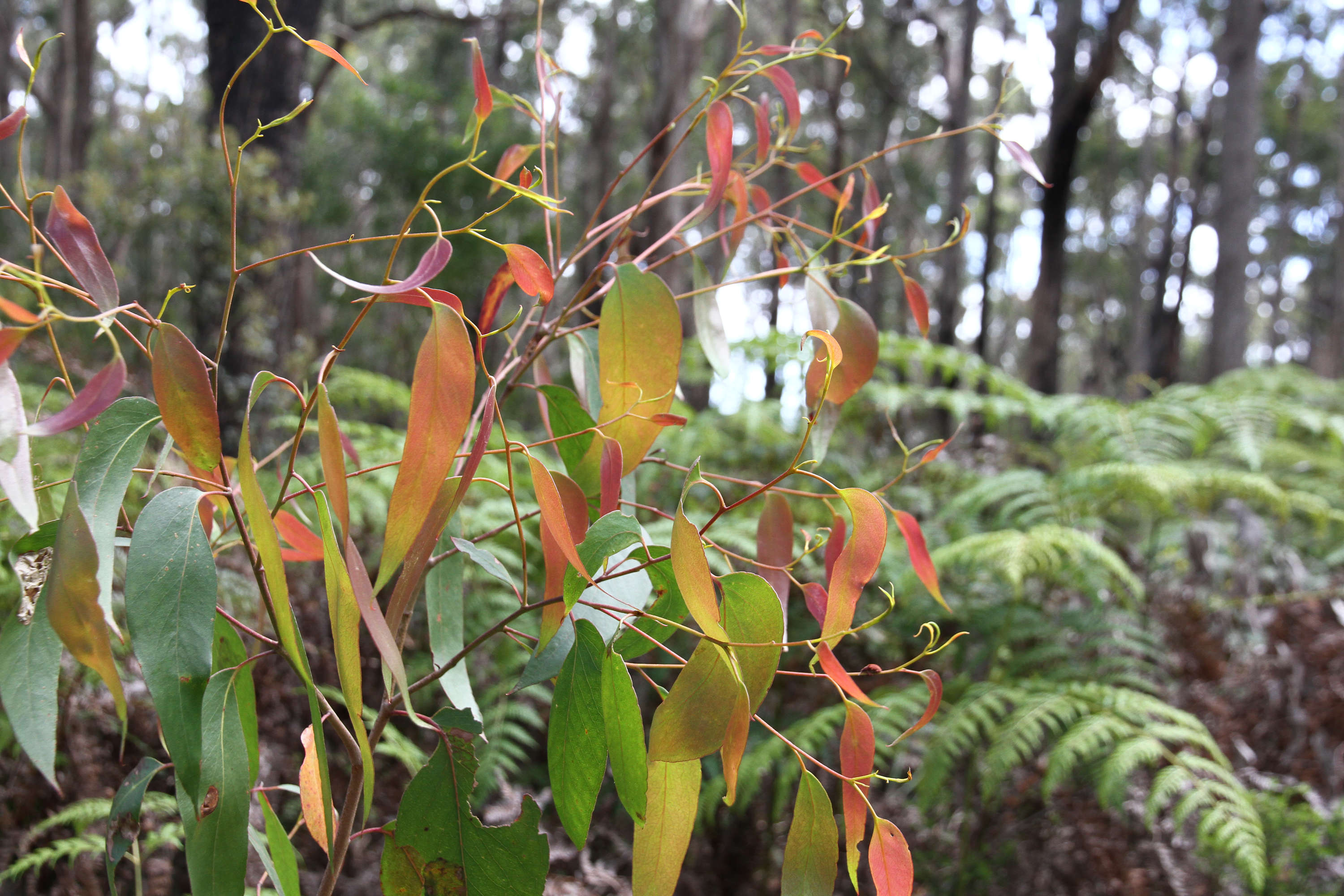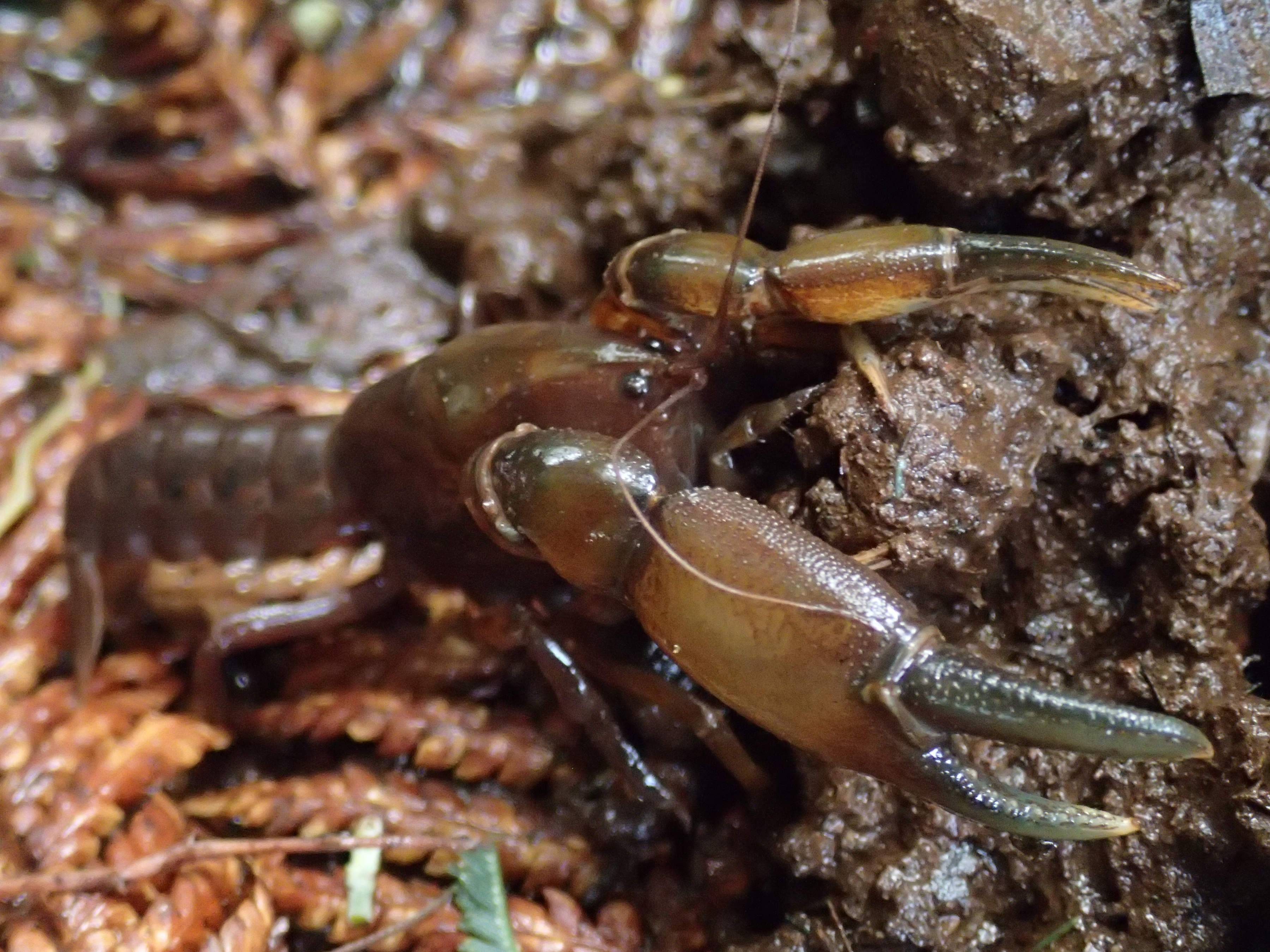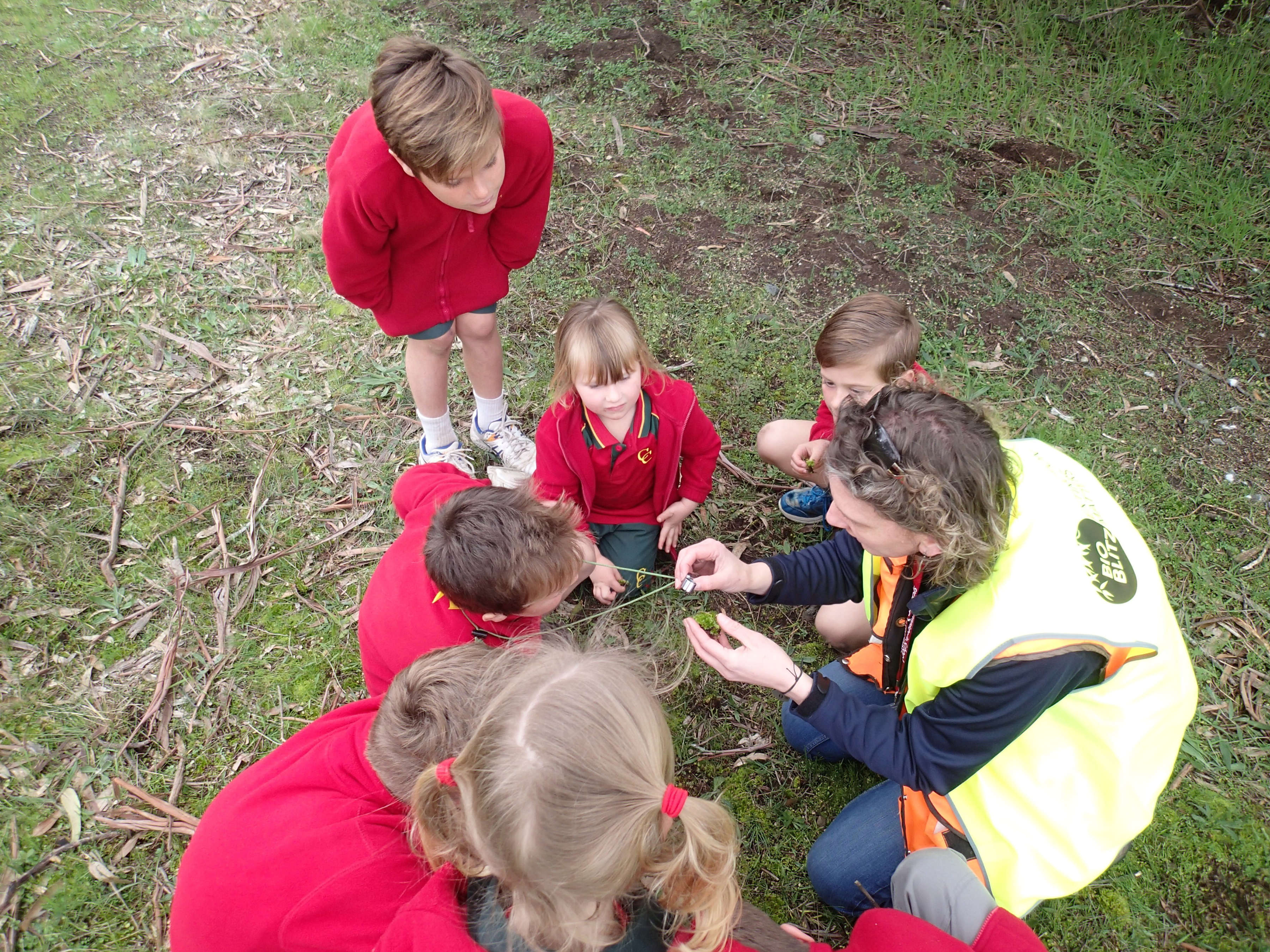A plant journey of discovery
Leaders: Philip Milner (Central North Field Naturalists) with Katya Bandow (University of Tasmania) and Philip Collier (Central North Field Naturalists)
At Kelcey Tier Greenbelt, there are several different forest types and other ecosystems for plants to live in — so we have the chance to find lots of species for the big BioBlitz list! With local botanists Phil Milner and Phil Collier, and UTAS PhD candidate Katya Bandow, we’ll walk through the reserve to discover a wide range of native plants, keeping an eye out for species that are listed as rare and threatened; then we’ll bring some samples back to our microscopes and identification keys at Basecamp. The two Phils and Katya will provide tips and techniques on how to look out for these plants in the wild and identify them, and we can discuss why they’re important. See session times and register.
Incredible Insects
Leaders: Kristi Ellingsen (Field Guide to the Insects of Tasmania), Keith Martin-Smith (Tasmanian Field Naturalists, Field Guide to the Insects of Tasmania, Tasmanian Museum & Art Gallery), Lynne Forster (University of Tasmania, Tasmanian Museum & Art Gallery)
To get the big species numbers for our BioBlitz, we need to look for insects! As both science teacher and co-founder of the fantastic online resource Field Guide to the Insects of Tasmania, Kristi Ellingsen is the perfect person to help us all contribute by finding and — the big challenge — identifying lots of different insects. Kristi’s team will take groups of us to look around the site. We’ll bring the less familiar insects back to our microscopes and identification keys at Basecamp, where she will show us how to become identification experts ourselves. Let’s see what we can find and identify! See session times and register.
Breakfast with the birds — and more…
Leader: Sarah Lloyd (Central North Field Naturalists, Westbury Backyard Bandicoots, BirdLife Tasmania)
Walk with local naturalist, writer and photographer Sarah Lloyd around Kelcey Tier Greenbelt. Sarah has published several books about natural history including ‘Bush Birds, a photographic guide’ a small booklet to assist in identifying bush and forest birds, and ‘Where the slime mould creeps’, that describes these very small and cryptic organisms. Lots of chances to learn all sorts of things as well as raise the BioBlitz species count. See session times and register.
Aussie Bird Count at Kelcey Tier Greenbelt
Leaders: Cat Young (University of Tasmania, Inala Foundation) and Ramit Singal (Having a Lark)
2023 is the 10th year of Birdlife Australia’s Aussie Bird Count! It runs from 16–22 October, so there’s time to learn how to do it with expert bird guides Ramit Singal and Cat Young as we record birds at the BioBlitz — and then head home to do your own. Bring your ears, and binoculars if you have them. See session times and register.
Biodiversity among the birds
Leaders: Cat Young (University of Tasmania, Inala Foundation) and Ramit Singal (Having a Lark)
Ramit Singal and Cat Young really know their birds. Walk with them, and help them spot as many birds as possible for the BioBlitz species list. Discover why they love watching birds, and learn how you can build up your own skills and expertise. Bring your ears, and binoculars if you have them. See session times and register.
A secure Kelcey Tier Greenbelt for swifties
Leader: Phil Hrstich (Wildcare Friends of Devonport Reserves)
Conservation manager Phil Hrstich is very familiar with the BioBlitz site. In fact, it was his idea to hold the BioBlitz at Kelcey Tier Greenbelt. Walk around the area with him, to learn about what he’s been doing to support the area’s diverse inhabitants. Most notably, Critically Endangered swift parrots often choose this area in which to breed, and they need hollows. Perhaps you’ve already noticed the nest boxes around the area? With Phil, you can find out which species are using them! All in all, you may spot and record a variety of species which are of conservation significance — from invasive, to threatened… See session times and register.
Twilight birds
Leader: Cat Young (University of Tasmania, Inala Foundation)
As the sun sets on Kelcey Tier, let’s join ornithologist Dr Cat Young to catch the last few day-active birds and see if we can also hear a nocturnal bird or two waking up. Bring your ears, binoculars if you have them — and a small torch to keep you safe. See session times and register.
Night bird search
Leaders: Cat Young (University of Tasmania, Inala Foundation) and Ramit Singal (Having a Lark)
Can we spot a masked owl, southern boobook or tawny frogmouth? Have you ever heard an owlet-nightjar? We don’t know if any of these species inhabit the BioBlitz site. Come on one of the night time surveys with Ramit Singal and Cat Young — let’s see if there’s the right habitat, and whether we can hear or see any nocturnal birds in the area. There’s plenty to explore. Bring your ears, binoculars if you have them — and a small torch to keep you safe. See session times and register.
Dawn birds
Leader: Ramit Singal (Having a Lark)
As the sun rises on Kelcey Tier Greenbelt, join local bird guide Ramit Singal to listen to the dawn chorus and spot the first birds leaving their roosts. Bring your ears, and some binoculars if you have them. How many birds’ calls can we identify? Bring your ears, binoculars if you have them, and a small torch to keep you safe. See session times and register.
Light breakfast/brunch with the birds
Leader: Cat Young (University of Tasmania, Inala Foundation) and Ramit Singal (Having a Lark)
Bird guides Ramit Singal and Cat Young have observed birds across much of the world. Discover the joy of birds and their behaviour with them, and learn to recognise birds both by their appearances and calls. We have the best chance of seeing the most birds earlier in the morning. How many species will this survey add to the BioBlitz list? Bring your ears, and binoculars if you have them. See session times and register.
Talk: Sunset bat chat
Leader: Dr Lisa Cawthen
Learn about what local bat expert Dr Lisa Cawthen has been discovering at Kelcey Tier Greenbelt, and what we might discover tonight. See session times and register.
Batty forays (night walks & acoustic surveys)
Leader: Dr Lisa Cawthen
Join local bat expert Dr Lisa Cawthen in surveys of the micro-bats that call Kelcey Tier Greenbelt home. These activities will focus on recording and identifying bat calls as bats emerge from their roosts and forage around Kelcey Tier Greenbelt. See session times and register.
Batty foray (trapping & call recording)
Leader: Dr Lisa Cawthen
Join local bat expert Dr Lisa Cawthen in a survey of the micro-bats that call the Kelcey Tier Greenbelt home. This activity will focus on collecting information on captured bats and recording bat calls as bats forage around Kelcey Tier Greenbelt. See session times and register.
Batty foray (Bat call ID)
Leader: Dr Lisa Cawthen
Local bat expert Dr Lisa Cawthen uncovers which micro-bats were recorded calling in our batty forays the night before. You’ll get a chance to see how bat calls are identified. It’s not by the way they sound to the human ear! See session times and register.
Cryptozoa — the hidden invertebrates
Leaders: Dr Alastair Richardson (Bookend Trust and University of Tasmania)
Often we think that invertebrates are just insects, but there are so many more. They can be hard to find — because they’re small, hiding under things, or deep down a hole — but they’re actually very numerous. Help Dr Alastair Richardson find them, and our species list could be huge! We’ll bring the less familiar species back to our microscopes and identification keys at Basecamp, where they will show us how to become identification experts ourselves. Alastair will be looking for flatworms, gastropods, multipedes, slaters, landhoppers, arachnids (spiders, scorpions, harvestmen, mites, pseudoscorpions), springtails… and — what else might we find? Perhaps we’ll get a glimpse of the elusive, Endangered Central North burrowing crayfish — found in Central North Tasmania and nowhere else in the world. We’ll be scrabbling in the dirt a bit — bring a magnifying glass if you have one, and gloves if you prefer. See session times and register.
Talk: Brilliant Burrowers — the Keystone Crustaceans
Leader: Dr Alastair Richardson (Bookend Trust and University of Tasmania)
In patches of our BioBlitz site, there are some intriguing holes in the mud — what could be down there? Perhaps you’ve seen some near where you live, too. Can we figure out which species lives inside? Crayfish expert Dr Alastair Richardson will help us find and understand them, and talk about Tasmania’s rich and diverse crayfish fauna. You might get a glimpse a very special, local burrowing crayfish too. See session times and register.
Spotlight search
Leader: Simon Van der veen (Central North Field Naturalists)
Most Tasmanian mammals, such as possums, wallabies and bandicoots, hide away during the day. Frogs are much less active in the day, too, and of course some birds are only active at night. If we don’t go out at night, we could miss a whole bunch of species living in our own backyard! Simon Van der veen has some great equipment for spotting them — walk with him, and let’s see how many species we can add to the big BioBlitz list. Wear dark clothing if you can; if you have a brighter red or white torch (to use under Simon’s direction) that might help to spot extra species; and binoculars could help you see any far-off, lit up animals more clearly. Bring a small torch as well, to keep you safe. This activity will start with a short introductory talk at Basecamp — others are also very welcome to attend the talk. See session times and register.
The secret life of mammals
Leader: Joanna Lyall (University of Tasmania, Natural Environmental Services Tasmania, West Tamar Landcare)
It can be quite surprising to discover which mammals live around us, that we rarely see directly — even quite big ones! Sometimes they’ll leave a track, a scat or another sign — but in some cases, the only way we find out if a particular species calls Kelcey Tier Greenbelt home is by putting up a remote camera (or ‘camera-trap’), to see who comes by. We’ll be putting out a few overnight across the BioBlitz site — join camera-trap expert Jo Lyall to check what’s been snapped, and to look out for any other signs. Suitable for people 10+ years old. See session times and register.
Invertebrate illuminations
Leader: Keith Martin-Smith (Tasmanian Field Naturalists, Field Guide to the Insects of Tasmania, Tasmanian Museum & Art Gallery)
Some of the smaller inhabitants of Kelcey Tier Greenbelt are much easier to see at night. Some spiders’ eyes are like tiny reflectors, while scorpions glow under UV light! Come on a night walk with Keith Martin-Smith to see what lights up… When you get back, you might like to have a look to see what’s been attracted by the moth lamp that he, Kristi Ellingsen and team have set up at Basecamp. See session times and register.
Noticing what’s under your nose
Leader: John Bowden (Tasmania Parks & Wildlife Service)
How many species will we find during the BioBlitz? That may depend on how much care we take in looking. Even on a few square metres of ground, it’s amazing how many different plants and animals can be seen, heard or otherwise detected if we really focus all of our senses. Many young people know and love Tasmania Parks & Wildlife Service Discovery Ranger John Bowden through the PWS WildsCOOL and Travelling Schools programs. Discover with him what it’s like to be a naturalist — from identifying tracks and scats, to searching for birds, bugs and more. John shares his skills and multiple decades of experience in noticing what’s right under our noses. Suitable for all ages including the very young. See session times and register.
Magical mystery wildlife spot
Leader: Ryan Francis (Pinion Advisory, Ryan Francis Photography)
Check his Flickr account, and you’ll see that Ryan Francis has an eye for spotting a wonderful range of surprise wildlife that others might miss. What will you spot together on this survey, to add to the big BioBlitz list? If it’s a sunny day, perhaps you’ll spot a reptile catching the rays — his particular favourites. See session times and register.


